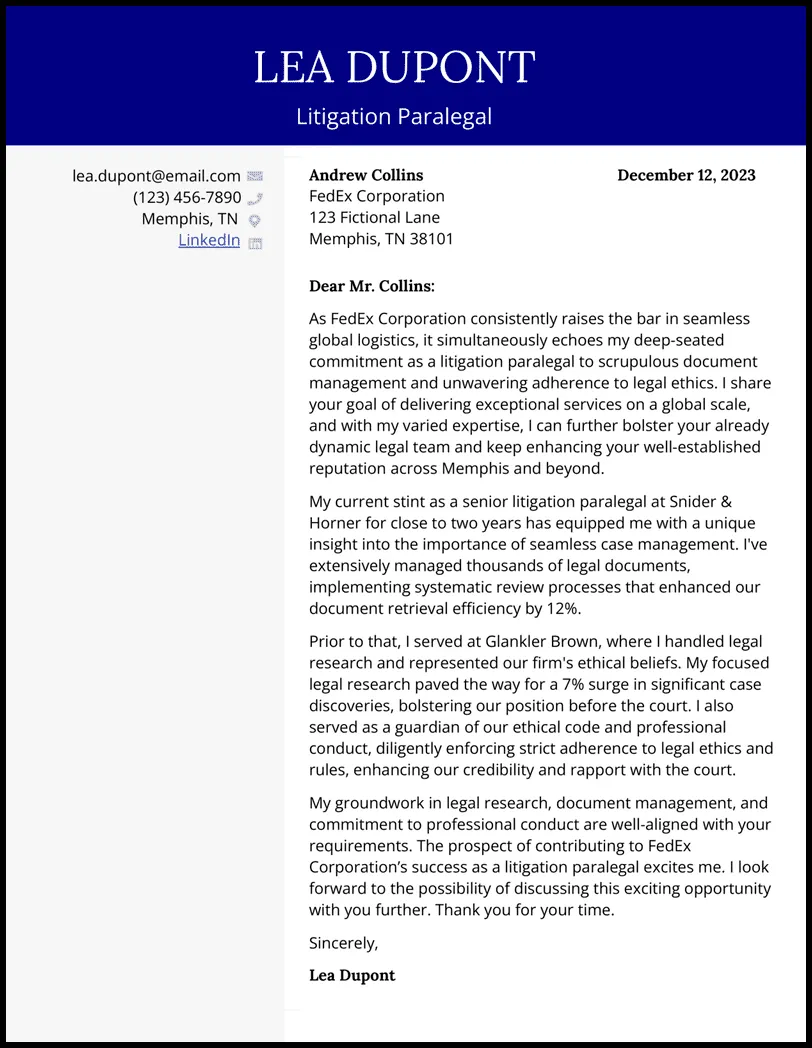Crafting a Litigation Paralegal Cover Letter
A compelling litigation paralegal cover letter is your first chance to impress a potential employer. It is a crucial document that introduces you, highlights your skills, and expresses your interest in the position. Unlike a resume, which provides a factual overview of your experience, a cover letter allows you to showcase your personality, communication skills, and enthusiasm for the role. The aim is to secure an interview, so every word must be carefully chosen to make a positive impact. Begin by understanding the specific requirements of the job and tailoring your letter to address them. Your cover letter isn’t just about repeating what’s in your resume; it’s about providing context and demonstrating why you are the perfect fit for the litigation paralegal position.
Formatting Your Cover Letter for Success
Proper formatting is essential for readability and professionalism. A well-formatted cover letter is easier to read and makes a strong first impression. Choose a clean, professional font like Times New Roman, Arial, or Calibri, with a font size between 10 and 12 points. Ensure consistent formatting throughout the document, including the use of single or 1.15 line spacing and standard one-inch margins. Avoid excessive use of bolding, underlining, or italics; use them sparingly to emphasize key points. Divide your letter into logical sections with clear headings and subheadings to guide the reader through your qualifications and experience. The overall goal is to present a polished, easy-to-read document that reflects your attention to detail and professionalism. Poor formatting suggests a lack of attention to detail, which is critical in the legal field.
Header Essentials
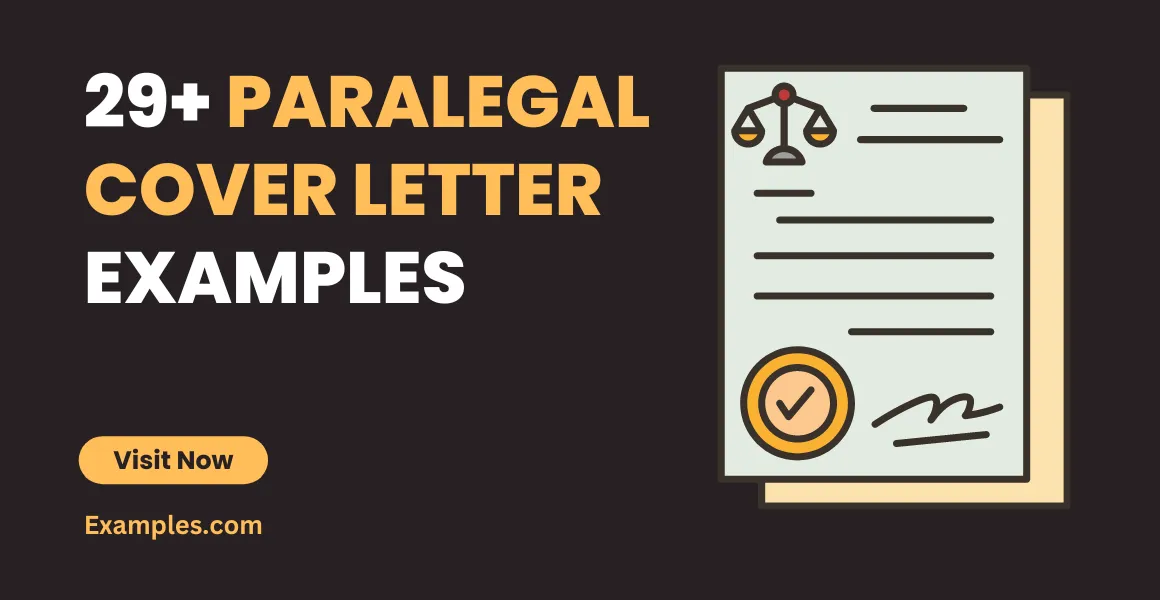
Your cover letter header sets the tone for the entire document. Begin with your contact information, including your full name, phone number, email address, and optionally, your LinkedIn profile URL. This information should be clearly presented at the top of the letter, usually on the left side. Directly below your contact information, include the date and the recipient’s details. Proper formatting is critical for making a good impression. Consider using a professional template that organizes the header information efficiently, using a simple, clean design that does not distract from the content. This header makes it easy for the hiring manager to contact you. Ensure your email address is professional.
Contact Information
Accuracy is paramount when providing contact details. Double-check your phone number and email address to ensure they are correct. A typo in your contact information could mean you miss out on interview opportunities. It is best to use a professional-sounding email address. Ensure your voicemail greeting is also professional and ready for a potential employer’s call. If you have a LinkedIn profile, consider including the URL; this provides the hiring manager with a quick way to learn more about your professional background and network.
Date and Recipient Details
The date should be placed below your contact information, typically aligned to the left. Next, include the recipient’s name (if known), their title, the law firm’s name, and the firm’s address. If you are unsure of the hiring manager’s name, research the firm’s website or call the office to find out. Addressing the letter to a specific person is always preferable as it shows that you’ve done your research and are genuinely interested in the position. If you cannot find a name, use a professional salutation like “Dear Hiring Manager” or “Dear [Law Firm Name] Recruiting Team”.
Personalized Salutation
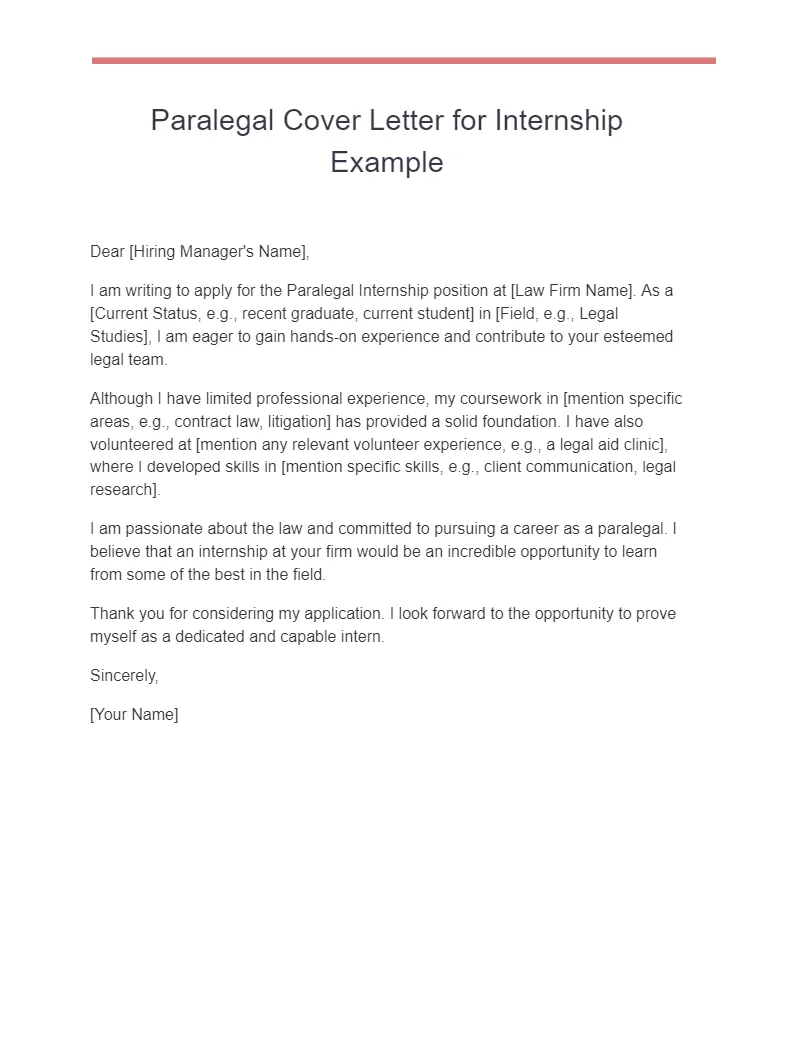
The salutation is your formal greeting and sets the tone for your letter. Use a formal and professional greeting, such as “Dear Mr./Ms. [Last Name]” if you know the hiring manager’s name. If you do not know the hiring manager’s name, use “Dear Hiring Manager” or “Dear Legal Team”. Avoid overly casual greetings. Your salutation should align with the tone of your letter. A well-chosen salutation indicates respect and attention to detail. This step may seem simple, but it’s a significant first impression and can influence the reader’s perception of your professionalism.
Body Paragraphs
The body paragraphs are where you demonstrate your qualifications and express your interest in the position. Divide your letter into three or four paragraphs to make it easy to read and digest. The first paragraph should state the position you are applying for and how you learned about the opportunity. The subsequent paragraphs should highlight your relevant skills and experience, providing specific examples and quantifiable achievements. Conclude with a paragraph that expresses your enthusiasm for the position and your desire for an interview. The content of each paragraph should be focused and concise, highlighting only the most relevant information to the job.
Highlighting Your Skills and Experience
Focus on the skills and experience that align with the job description. Tailor your letter to the specific requirements listed in the job posting. Include relevant legal skills, such as legal research, document drafting, case management, and trial preparation. Provide specific examples of how you have used these skills in previous roles. For instance, describe a time you successfully managed a complex case, drafted a winning motion, or conducted effective legal research that supported a positive outcome. Always support your claims with concrete examples to demonstrate your capabilities.
Showcasing Relevant Legal Skills
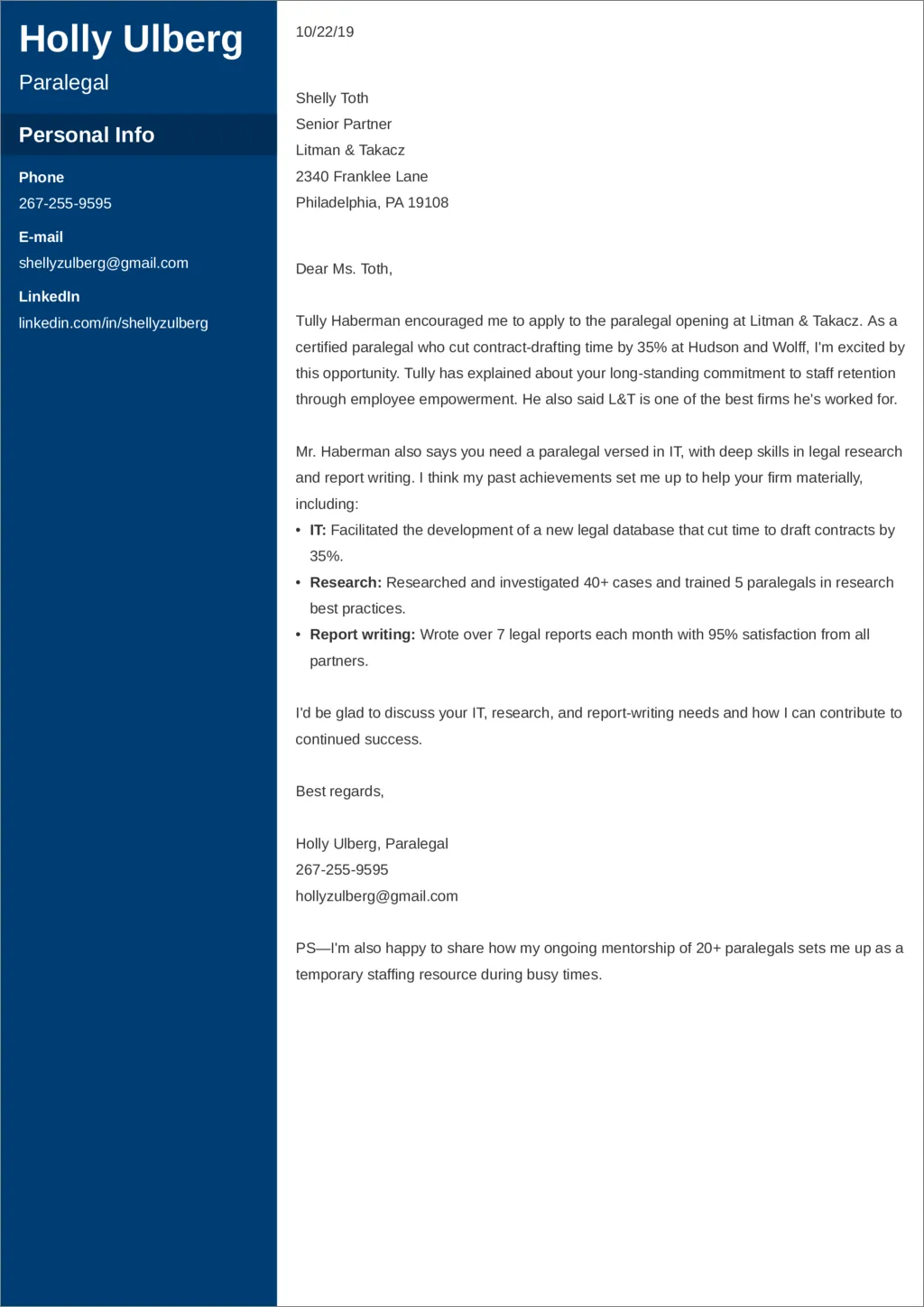
Detail your experience with legal software, databases, and any specialized knowledge relevant to the position. This could include experience with e-discovery platforms, case management software, or specific areas of law, such as personal injury, contract law, or intellectual property. Mention any certifications or training you have that are relevant to the role. Highlight your ability to handle multiple tasks, manage deadlines, and work effectively under pressure. Showing competence in these areas will directly correlate to the role requirements. Demonstrate your ability to work independently and as part of a team, emphasizing your communication and organizational skills.
Quantifying Achievements
Whenever possible, quantify your achievements with numbers and data. Instead of saying “Improved efficiency,” state “Improved case file organization efficiency by 15% within three months.” Quantifiable achievements provide concrete evidence of your skills and accomplishments, making your claims more credible and impactful. Examples might include the number of cases you have managed, the successful outcomes you have contributed to, or the amount of time you have saved through efficient processes. These metrics make your achievements more tangible and demonstrate your ability to deliver results. Quantifying your accomplishments will impress the hiring manager.
Demonstrating Passion for Litigation
Express your genuine interest in the litigation field. Explain why you are drawn to this specific area of law and what excites you about the opportunity. This is your chance to convey your enthusiasm and show that you are motivated to work hard and contribute to the team. Mention any specific cases or legal areas that interest you, demonstrating your knowledge and commitment. Expressing passion for the legal field can make your cover letter memorable and set you apart from other candidates. Passion will show that you are truly invested in the role.
Addressing the Employer’s Needs
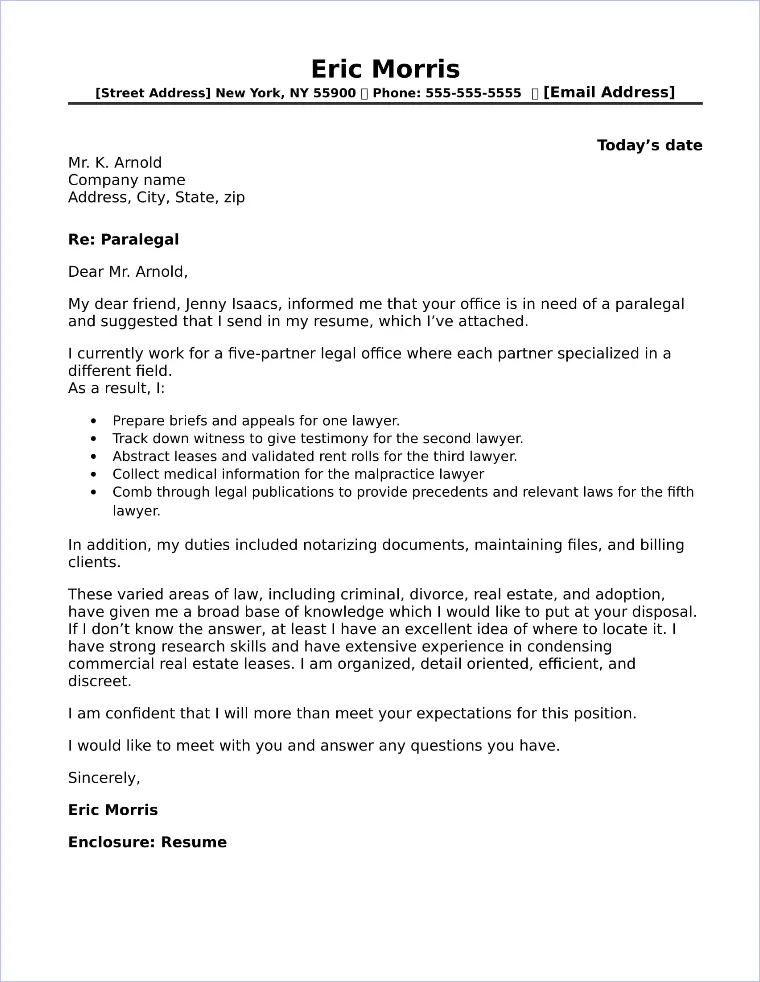
Carefully review the job description and identify the employer’s key needs and requirements. Then, align your skills, experience, and achievements with these needs. Use the language of the job description to demonstrate that you understand what the employer is looking for. Briefly explain how your skills and experience make you the ideal candidate to meet those needs. By directly addressing the employer’s needs, you show that you have taken the time to understand the role and that you are the perfect fit for the position. Show your adaptability and ability to fulfill requirements, which is important in legal fields.
Tailoring to the Specific Job
Avoid using a generic cover letter. Customize each cover letter to the specific job and law firm. Research the law firm, its practice areas, and its values. Demonstrate that you understand the firm’s culture and the types of cases it handles. Tailoring your cover letter shows that you are serious about the opportunity and that you have taken the time to learn about the employer. If the job description highlights specific skills or experiences, make sure to address them directly in your letter. Using details will make your cover letter stand out from other candidates.
Using Keywords from the Job Description
Incorporate keywords and phrases from the job description into your cover letter. This helps the hiring manager quickly identify that you have the required skills and experience. Review the job posting and identify the key skills, qualifications, and responsibilities. Then, naturally integrate these keywords into your cover letter. Be careful not to overdo it or stuff your letter with keywords, as this can make it sound unnatural. Keywords help ensure your application gets noticed. Keywords will also help the applicant tracking system (ATS) to see your document in the search results.
Closing Your Cover Letter
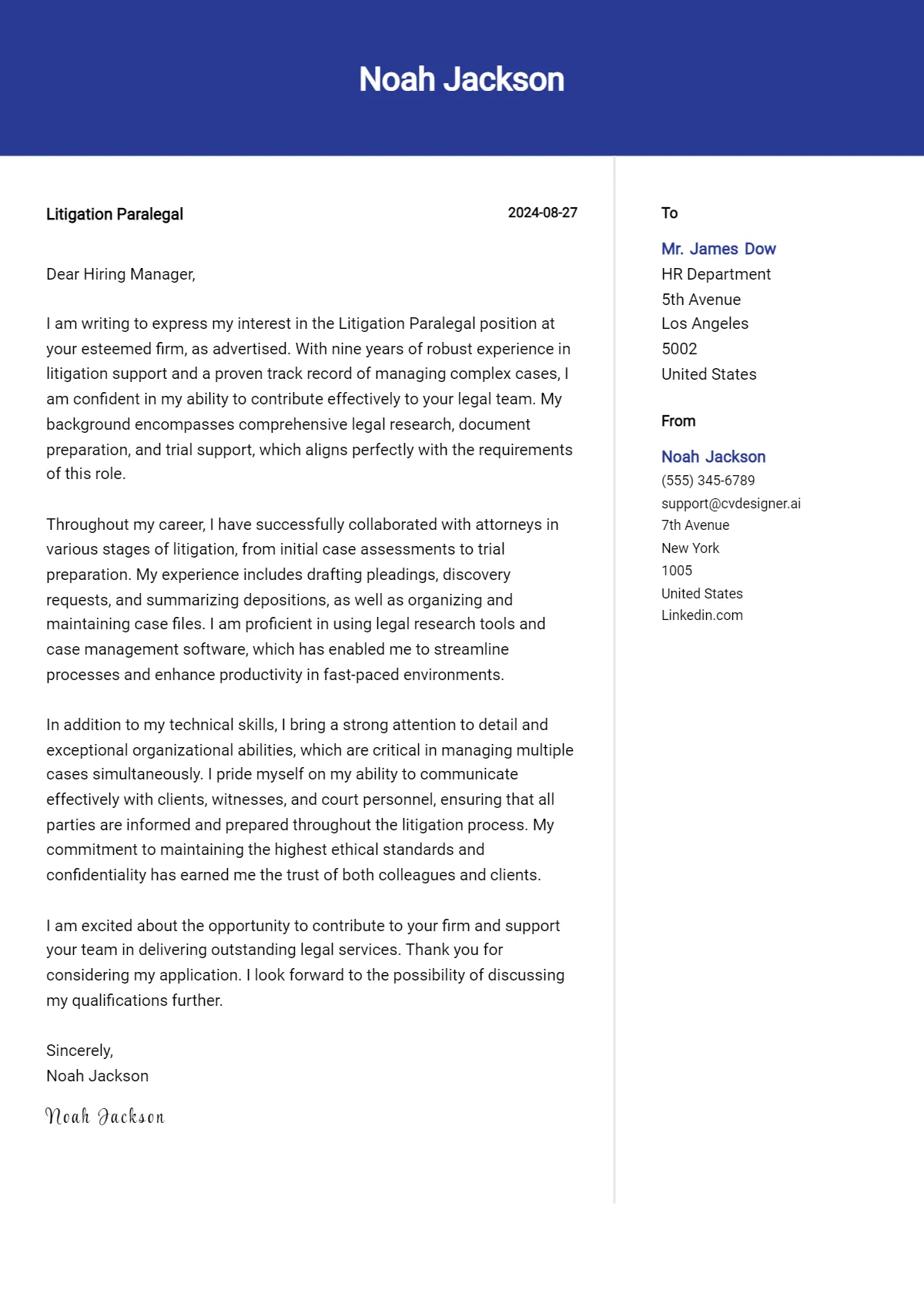
The closing paragraph is your final opportunity to leave a positive impression. The closing paragraph summarizes your interest in the position and encourages the hiring manager to contact you for an interview. End your cover letter with a strong closing statement and a clear call to action. Keep it concise and focused on your enthusiasm for the opportunity.
Professional Closing and Signature
Use a professional closing, such as “Sincerely,” “Best regards,” or “Respectfully,” followed by your typed name. If you are submitting a hard copy, leave space for your signature above your typed name. Ensure that the closing matches the tone of your letter. A professional and well-crafted closing reinforces your professionalism and attention to detail. This is an essential part of the communication process. Ensure your name is clearly visible.
Call to Action
Include a call to action that encourages the hiring manager to contact you. This could be a simple statement such as, “I am eager to discuss my qualifications further and am available for an interview at your earliest convenience.” or “Thank you for considering my application. I look forward to hearing from you.” This shows your enthusiasm and makes it clear that you want to move forward in the hiring process. Including a call to action encourages the next step.
Proofreading and Editing
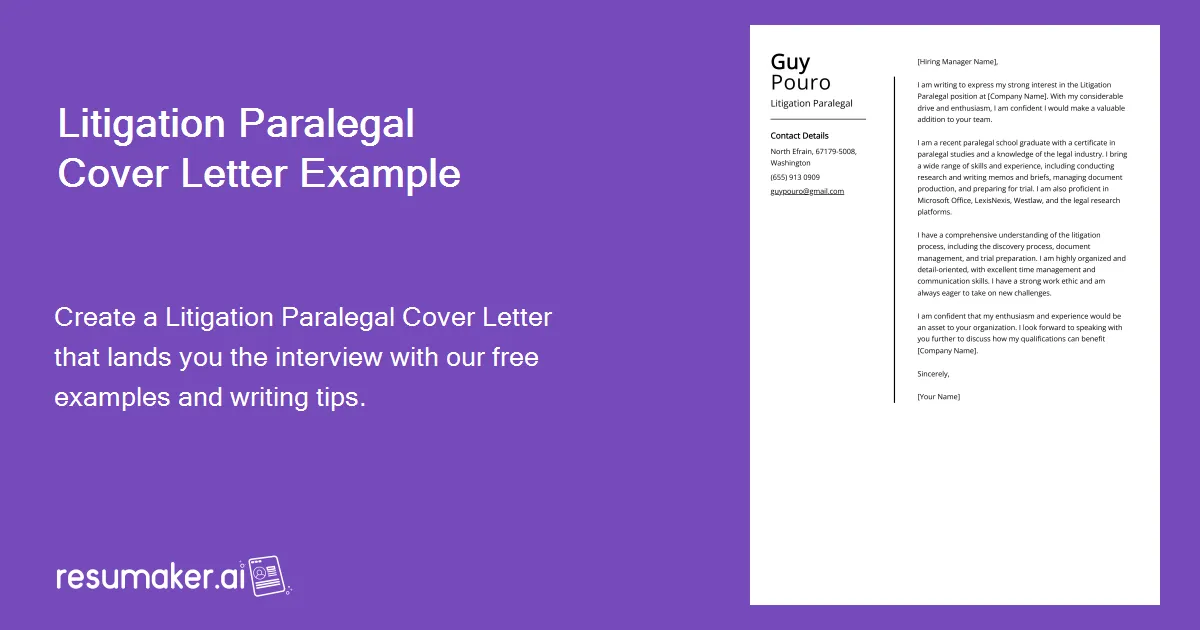
Proofreading is a crucial step in the cover letter writing process. Before submitting your cover letter, thoroughly proofread it for any grammatical errors, spelling mistakes, and typos. Poor grammar and spelling errors can significantly damage your credibility. Review the document multiple times, or better yet, have someone else proofread it for you. Even a minor error can create a negative impression, so be meticulous. Ensure that all facts and information are accurate. Double-check the recipient’s name, title, and the firm’s name to avoid embarrassing mistakes. Accuracy and clarity are critical in the legal field.
Ensuring Accuracy and Clarity
Ensure that your cover letter is clear, concise, and easy to understand. Avoid jargon and overly complex sentences. Keep your language professional and straightforward. The goal is to communicate your skills and qualifications effectively. Ensure all the content is accurate and relevant to the job requirements. Your writing should show that you can communicate in a clear and organized manner. A well-written cover letter demonstrates your attention to detail, which is essential for a litigation paralegal. Accuracy will help you avoid misunderstandings.
